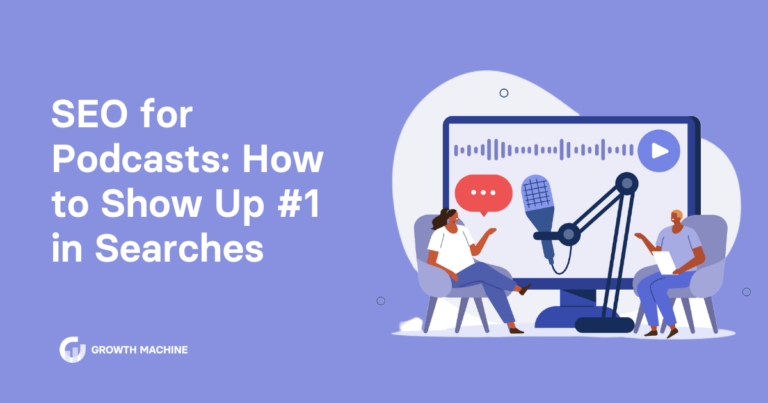How to Optimize for Featured Snippets to Boost SEO
Are you looking to send a surge of visitors right to your digital doorstep? Tap into the power of Google’s featured snippets—a search feature that can catapult your content to the forefront of search results.
Featured snippets, often called “position zero” because they appear above the top-ranked listing in the search results, play a key role in online visibility.
In this article, we’ll dive deep into featured snippets—including what they are, why they matter, and how you can optimize your content to land these coveted spots.
What Are Featured Snippets in Google Search Results?
A featured snippet is a short excerpt from a webpage that Google prominently displays in response to a user’s query. These SERP features are designed to answer peoples’ questions quickly and effectively without having to click through to the actual website.
But hang on one moment— isn’t the goal to drive more potential customers to your website?
Technically, yes.
Capturing Google SERP features such as featured snippets are a great way to build brand awareness for people who might not know you yet. They offer a small taste of the value you provide, enticing users to click through to your webpage to get the rest of the goods.
Why Are Featured Snippets Important in SEO?
The strength of featured snippets lies in their ability to increase visibility and drive more organic traffic traffic. They give your content a prime position, which can lead to increased click-through rates (CTR), more conversions, and more credibility.
But that’s not all. You know when you ask Siri or Alexa or Google a question? That’s voice search, and it’s becoming more popular among search queries. Featured snippets are often the source of spoken responses, making them even more crucial for SEO.
Featured snippets can also significantly enhance the user’s search experience. Who doesn’t love getting immediate information directly on the results page itself? Never underestimate the power of a fantastic user experience when it comes to building brand loyalty.
Common Types of Featured Snippets
There are several types of featured snippets, each designed to provide the searcher with different kinds of information:
- Paragraph snippets provide answers in small blocks of text.
- List snippets may appear as numbered lists or unordered lists, perfect for recipes, instructions, or any content that benefits from an organized sequence.
- Table snippets are used for data arranged in rows and columns, such as pricing or schedules.
Featured Snippets vs. Rich Snippets
Featured snippets are different from rich snippets.
Rich snippets are enhanced search results that include extra information such as ratings, images, and other elements that aim to provide more context around the webpage.
While featured snippets aim to answer user questions directly on the SERP, rich snippets enhance existing search results based on structured data embedded in the page’s HTML.
How to Find Featured Snippet Opportunities
Capturing featured snippets starts with recognizing where the opportunities lie. To spot these opportunities, you need to pinpoint exactly what your audience is searching for and how they pose their questions.
Here are two strategies to help you better understand your audience’s search intent.
Conduct Keyword Research
Begin by identifying potential keywords that are likely to trigger snippets, focusing on long-tail keywords.
Long-tail keywords are longer, more detailed keyword phrases that visitors are likely to use when they’re closer to a point of purchase. These phrases are incredibly useful, as they reflect specific queries and often have less competition than more generic terms.
To uncover valuable long-tail keyword opportunities, tools like Ahrefs or even Google’s own Keyword Planner are indispensable. These tools help you find both the broad questions and terms and also the niche, specific queries that your target audience is searching for.
For example, instead of targeting broad terms like “best sleep aids,” you might find more value in a long-tail keyword like “best sleep aids with natural ingredients.” These keywords speak more directly to your audience’s values and what factors they might consider when making a purchase.
Examine the Current Search Engine Results Page (SERP) Landscape
Once you’ve identified your long-tail keywords, analyze the existing featured snippets for these queries.
Note the format and the type of information provided in those snippets. Analyzing content gaps will guide you in crafting content that is precisely aligned with the intent behind the search, increasing your chances of capturing the snippet.
For instance, if paragraph-style snippets dominate a particular query, look at the length of these paragraphs and the type of information they contain. Are they providing definitions, step-by-step guidance, or quick answers? This can tell you a lot about what users are looking for when they type in that query.
Don’t forget to consider the source of these snippets in your research. Are they coming from authoritative sites with high domain authority, or can newer or less-known websites also clinch the top spot? This could influence your overall approach to digital marketing and SEO optimization.
How to Optimize for Featured Snippets
Achieving a featured snippet on the top of Google search results is more than just luck; it’s about strategically navigating the competitive landscape.
By closely examining what content currently holds these coveted spots, you can discover the winning formulas—like the right format and structure—that make Google sit up and take notice.
Here’s how you can take those learnings and create high-quality content with snippet optimization.
1. Strategic Content Planning
After analyzing the snippets currently ranking for your target keywords, use these insights to create a killer content strategy.
Start by developing key content themes. For example, if longer, detailed answers are trending in snippets, plan a series of blog posts that dive deep into related topics. Each post can tackle different aspects of a broader subject, giving your audience more in depth coverage that search engines might favor for snippets.
In addition to future content planning, you can also use your research insights to go back and reformat existing blog posts. For instance, if paragraphs or lists are performing well these days, revise older pieces of content to match. This not only helps with current SEO but also leverages past content to compete for snippets with less time and energy than it takes starting from scratch.
2. Use the Right Content Format
Align your content format with the type most common snippet formats for your target keywords to better meet user and Google preferences.
Don’t be afraid to experiment either! Trying out different formats can reveal which ones resonate most effectively with your audience and enhance engagement.
Additionally, formatting such as bullet points or numbered lists can make complex information more digestible, increasing the chances that Google will select your content for a snippet when users seek clear and concise answers.
3. Tackle Related Questions in Headings
Headings are like signposts that guide readers—and search engines—through your content.
Make sure all H2s and H3s directly answer any burning questions your audience might type into Google. This simple action can significantly boost your content’s visibility in organic search results with the bonus of improving your site’s user experience.
Additionally, structuring your content this way helps create a more logical flow, making it easier for readers to find the information they need quickly. This will not only satisfy user intent but also improve SEO, as Google favors content that’s well-organized and easy to navigate.
4. Answer User Questions Directly in Your Content
Brainstorm quick answers to the top questions your target audience might search for. Then, take those answers and place them at the top of your content, or right underneath key subheadings.
Remember: These answers are essentially your elevator pitch to Google, so make it count!
Crafting your content to address these questions can significantly increase your visibility and click-through rates.
5. Incorporate a Robust FAQ Section
FAQs are a goldmine for featured snippets. By structuring your FAQs around common user queries, you significantly increase the chances of your content being picked up as a snippet.
Your FAQ section should address your target audience’s most common questions with precise and direct answers, potentially formatted in both paragraph and list forms to cater to different snippet types.
This strategy is also effective for appearing in Google’s “People Also Ask” feature, which highlights directly answered questions related to the searcher’s query.
6. Include Images and Videos
Adding relevant images and videos not only spices up your content but can catch Google’s eye for multimedia snippets (yes, video snippets exist and can also be captured).
If you’re wondering how to optimize for features snippets using media, ensure all visuals are top-notch and have snappy, descriptive captions that incorporate target keywords. Always use high-quality images and videos where possible, and ensure they’re compressed appropriately so they don’t slow down your page load speeds and impact your user experience.
7. Check That the Rest of Your Content is SEO-Optimized
While the spotlight might be on the snippet-worthy parts of your content, that doesn’t mean you can neglect SEO strategy when it comes to the rest of your content.
If you want to dominate the Google search results, you need to take SEO seriously. From strategic meta tags to fast load times and relevant internal links, it all plays a part in strengthening your SEO efforts and establishing your site as a trustworthy source of information.
When search engines can quickly identify the most relevant sections of your content, it boosts your chances of landing more featured snippets in the future.
Ready to Elevate Your Online Presence?
Now that you understand how to optimize for featured snippets, you can enhance your chances of capturing that coveted “position zero.”
But let’s be honest, keeping up with the latest SERP features and Google algorithm changes can be quite the task. If you’re a busy business owner looking to truly compete in the online arena, partnering with an SEO-focused content agency can be a game-changer.
At Growth Machine, we specialize in creating and optimizing content that wins featured snippets regularly. Let our expert team of SEO strategists and content creators help your brand dominate search results and achieve sustainable growth.Ready to capture more featured snippets? Contact us today to see how we can create an SEO strategy that drives results and supports your brand’s online growth!







